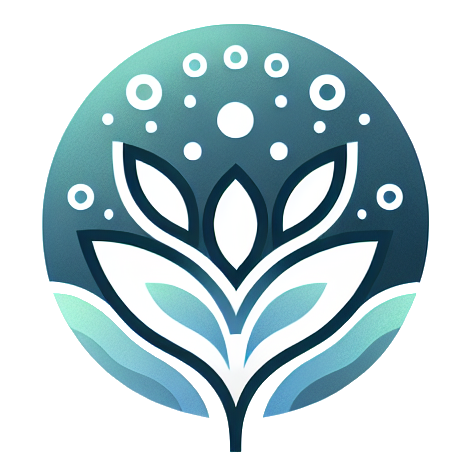In today's fast-paced world, stress has become an unwelcome companion for many. Whether it's the pressures of work, familial responsibilities, or the demands of social life, stress can lead to a myriad of health problems if left unchecked. However, amidst the hustle and bustle, there lies a powerful tool that can help us manage stress: creativity. Let’s delve into the fascinating link between creativity and stress relief and discover how engaging in creative activities can be a beacon of light in our journey towards wellness.
The Science of Creativity
Creativity is often perceived as the realm of artists, writers, and musicians. However, it’s a fundamental human trait that manifests in various forms, from problem-solving and innovation to everyday activities like cooking and gardening. According to research, engaging in creative activities can stimulate the brain’s reward system, releasing dopamine, a neurotransmitter associated with feelings of pleasure and satisfaction.
Studies have shown that creative engagement can significantly reduce levels of cortisol, the stress hormone. By allowing ourselves to immerse in creative endeavors, we not only unlock our imagination but also contribute to a healthier mental state. This interaction between creativity and psychological well-being underscores the importance of nurturing our creative spirits, regardless of our chosen outlet.
How Creativity Helps Combat Stress
One of the most significant benefits of creativity is its ability to provide an emotional outlet. When we create, we express ourselves in ways that words often cannot capture. This expression can lead to a cathartic release of pent-up emotions, helping to alleviate feelings of stress and anxiety. Here are a few ways creativity serves as a stress relief tool:
1. Mindfulness and Presence
Engaging in creative activities often requires focus and attention, drawing us into the present moment. This state of mindfulness can serve as a powerful antidote to stress. When we concentrate on creating, whether it’s painting a canvas or crafting a story, we momentarily forget our worries and immerse ourselves in the joy of the process.
2. Improved Problem-Solving Skills
Creative thinking fosters innovative problem-solving skills, allowing us to approach challenges with a fresh perspective. By engaging in creative activities, we train our brains to think outside the box, which can help reduce the overwhelming feelings associated with stress.
3. Building Resilience
The process of creating often involves trial and error. This journey, fraught with challenges, teaches us resilience and perseverance. When we learn to embrace mistakes and find joy in the creative process, we become more equipped to handle the stresses of everyday life.
Different Forms of Creative Expression
Creativity can take many forms, and finding the right outlet is key to reaping its stress-relieving benefits. Here are some popular avenues for creative expression that you might consider exploring:
Art and Craft
Painting, drawing, or engaging in crafts allows for self-expression and can be incredibly therapeutic. The act of putting brush to canvas or shaping clay can transport you to a place of calm and joy.
Writing
Whether it's journaling, poetry, or storytelling, writing can be a powerful tool for reflection and emotional release. Putting your thoughts on paper can help clarify feelings and reduce stress.
Music
Playing an instrument, singing, or even listening to music can elevate your mood and provide an emotional outlet. Music has a unique ability to connect with our emotions, making it a profound form of creative expression.
Movement
Dance or physical activities like yoga blend creativity with movement, offering both physical and emotional benefits. These activities encourage mindfulness while allowing for personal expression.
Connecting with Nature
Nature itself is a canvas of creativity. Engaging with the natural world can inspire creativity and provide a sense of peace. Gardening, hiking, or simply spending time outdoors can enhance our mood and reduce stress. Nature encourages us to slow down, breathe, and reconnect with ourselves, making it an ideal partner in our creative pursuits.
"Creativity is intelligence having fun." — Albert Einstein
Tips for Cultivating Your Creative Side
Create a Dedicated Space: Designate a space in your home for creative activities. This area should be inviting and free from distractions, allowing you to focus on your craft.
Set Aside Time: Just as you would schedule a meeting or appointment, allocate time in your week for creative pursuits. Consistency can help establish a fulfilling routine.
Try New Things: Don’t be afraid to step out of your comfort zone. Experiment with different forms of creativity to discover what resonates most with you.
Join a Group: Connecting with others who share your interests can provide motivation and inspiration. Look for local art classes, writing groups, or community workshops.
Celebrate Small Wins: Recognize and celebrate your creative achievements, no matter how small. This positive reinforcement can boost your confidence and encourage you to continue.
In a world where stress often feels overwhelming, embracing creativity can serve as a vital lifeline. By allowing ourselves to explore our creative potential, we not only tap into a source of joy but also cultivate resilience against life's challenges. Remember, creativity is not about perfection; it’s about the process of exploration and self-discovery. So, pick up that paintbrush, open that journal, or dance like nobody's watching—your mental well-being will thank you.
Embrace the beautiful connection between creativity and stress relief, and let your imagination guide you towards a brighter, healthier future.
